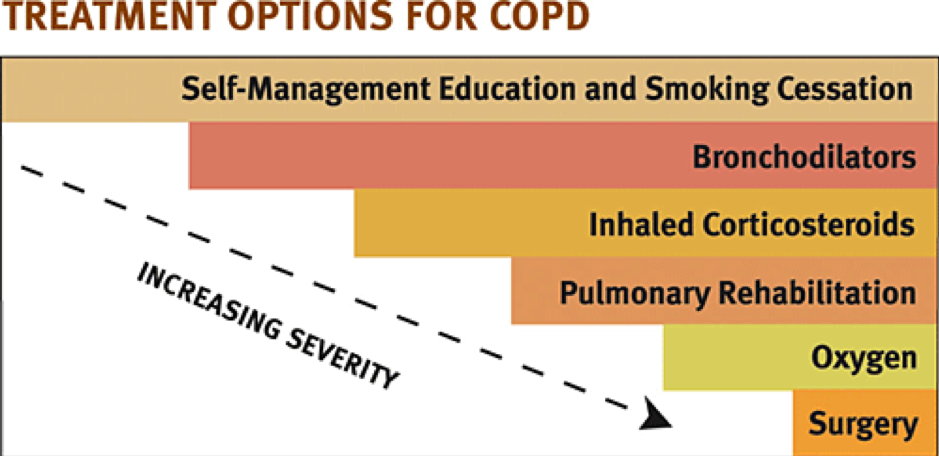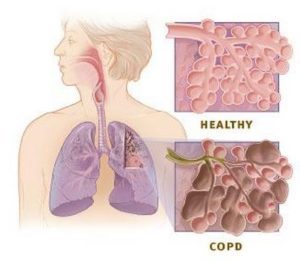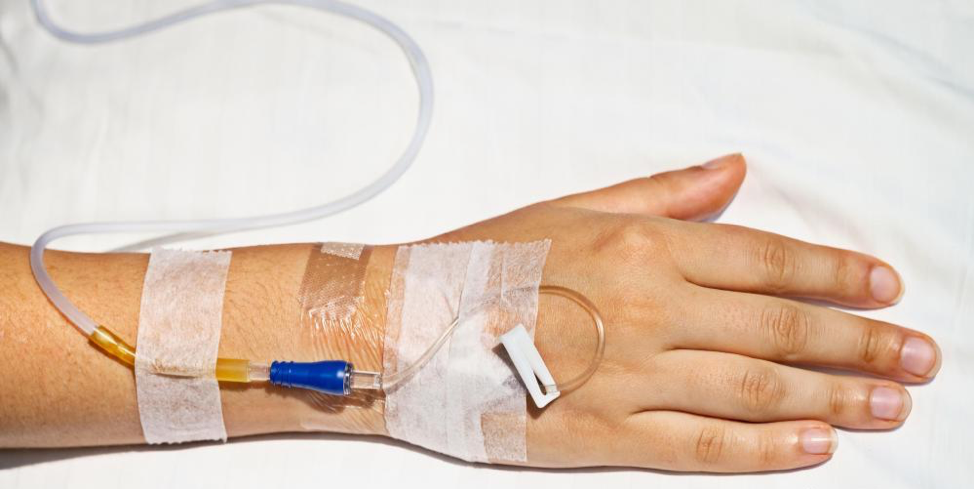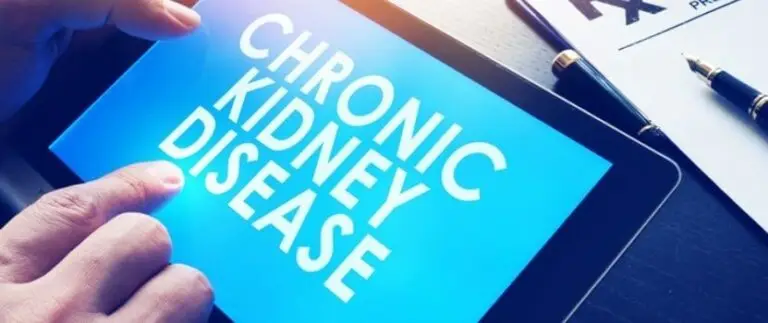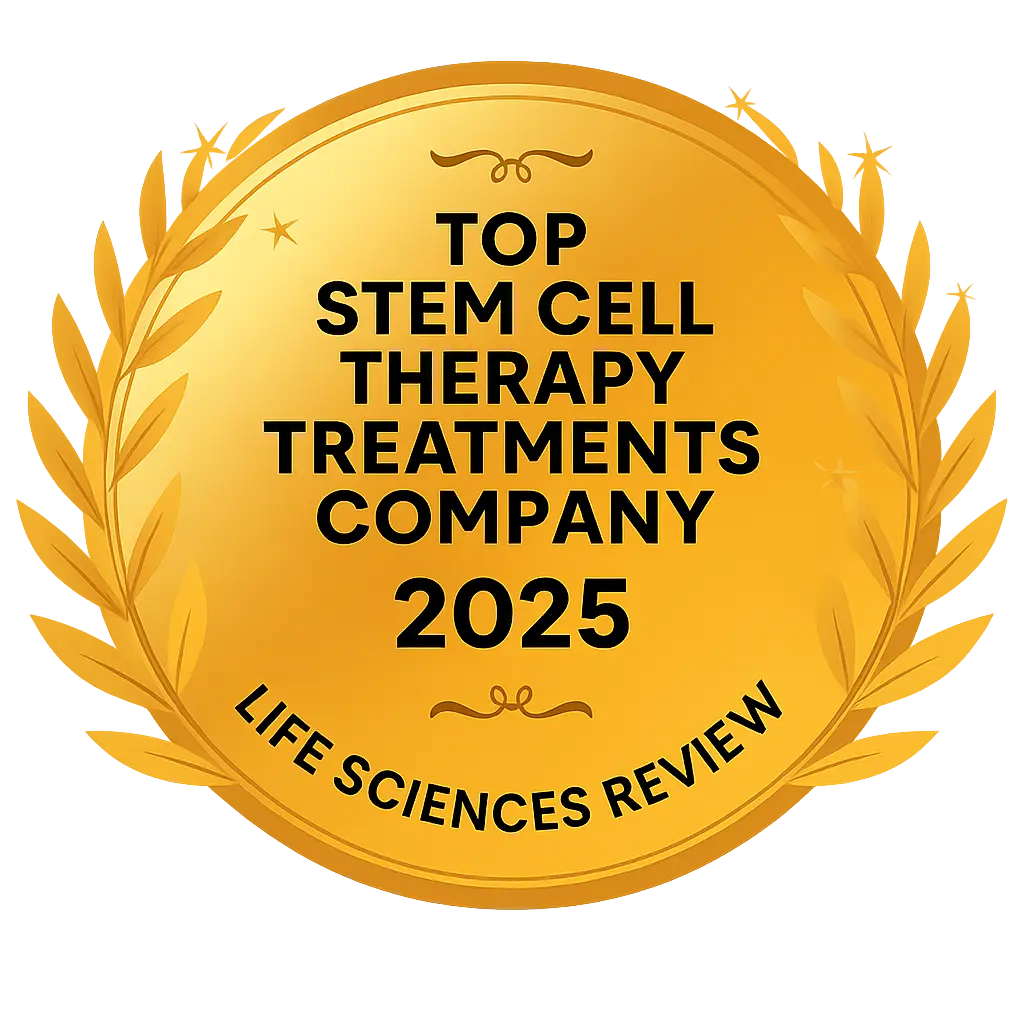Stem Cell Therapy for COPD
Dr. Bill Johnson explains how stem cells can help fix COPD on Good Morning Texas.
Understanding COPD and Its Challenges
Chronic Obstructive Pulmonary Disease (COPD) is a progressive lung condition that affects millions of Americans. It includes chronic bronchitis and emphysema, which make breathing difficult and reduce oxygen flow throughout the body. Patients often rely on inhalers, steroids, or oxygen therapy to manage symptoms — but these treatments only control symptoms and do not reverse lung damage.
How Stem Cell Therapy Can Help COPD Patients
Stem cell therapy offers an innovative approach to managing COPD by using your body’s own regenerative cells to support healing. At Innovations Stem Cell Center, we use adipose-derived stem cells (collected from your fat) and deliver them via IV infusion, where they may help reduce inflammation, support lung tissue repair, and improve respiratory function.
While results vary, many of our patients report better stamina, easier breathing, and a reduction in symptom severity after treatment.
Benefits of Stem Cell Therapy for COPD
Reduced inflammation in airways
Improved oxygen exchange
Better exercise tolerance
Decreased dependency on inhalers or supplemental oxygen
Slowed progression of disease symptoms
Current Research and Findings
While stem cell therapy for COPD is still considered investigational, emerging research and patient experiences suggest that regenerative medicine may improve quality of life and lung function. Dr. Bill Johnson has been at the forefront of advanced therapies for over a decade, appearing on national and local media to share real patient results and outcomes.
Cost Of Stem Cell Therapy For COPD
Our COPD treatment protocol typically includes:
A full medical evaluation
Fat collection under local anesthesia (mini liposuction)
Same-day stem cell processing, nebulizer dose, and IV infusion
The outpatient process takes about 4 hours. Most patients resume normal activity the next day.
Treatment cost: $12,500 for the first treatment, and $5,000 for a second treatment within 6–12 months (recommended for optimal results).
Financing Options
We understand that advanced medical treatment is an investment. That’s why we offer flexible 24–60 month payment plans with affordable monthly options.
Financing is available for patients of all credit backgrounds — even if you’ve been turned down elsewhere.
Ask our team about pre-approval and same-day application links to make your treatment as stress-free as possible.
COPD Patient Testimonial – Real Results
Meet one of our patients who underwent stem cell therapy for COPD and shares his journey back to breathing better, naturally.
Safety and Efficacy of Stem Cell Therapy for COPD
The most common question asked about stem cells for COPD is: “Will they help my shortness of breath?”. There is a great deal of current research being done to answer that question and others. Many different techniques and approaches are being investigated. We want to concentrate on questions being asked by our patients. Some of the most common questions for stem cells used for COPD are:
1. Question: Will stem cells help my shortness of breath?
Answer: Most of the time. Studies show improvement in most patients. Although some improvement can be quick, it appears that most improvement is slow and gradual. Our experience at Innovations Medical has
2. Question: Will stem cells help repair my lungs?
Answer: Likely. Several studies have shown improvement in lung function measurements. As mentioned above, these improvements are often slow, taking months.
3. Question: Are stem cells for my lungs safe?
Answer: Yes. Studies show stem cells are very safe when used for COPD.
4. Question: How many treatments will I need for my lungs?
Answer: One may be enough, but many patients respond better to repeated treatments over time.
Is Stem Cell Therapy for COPD Right for You?
Studies have attracted great interest for lung disease because current therapies treat symptoms and cannot repair lung function. Studies show stem cells are safe and the majority of studies show they are effective. Unfortunately, most studies are very small. In addition, MANY different approaches are being used, making it impossible to know the best way to use stem cells for lung disease. It may be several years before large studies develop standards for the use of stem cells. Some people with lung disease cannot wait those years, so safe treatments that can help may be the best alternative. Our experience at Innovations Stem Cell Center, as part of the Cell Surgical Network, has shown our process to be safe. In many of our copd patients, we have seen about a 0.5 percent increase in lung function every month. While that is a small improvement, most patients with COPD lose about 1% per month. That means that stem cell therapy is stopping worsening and slowly improving lung function.
What is Chronic Obstructive Lung Disease (COPD)?

Chronic Obstructive Lung Disease (COPD) is a debilitating lung condition that leaves patients unable to breathe or enjoy life. It is also known as emphysema, chronic bronchitis, and chronic obstructive asthma. COPD is rated as the third leading killer in the United States, killing approximately 120,000 individuals a year. Persons suffering from COPD also experience chronic disability and often low quality of life. Sufferers also require a large amount of medical care with its expense and the need to stay near medical facilities and personnel. COPD is a very limiting and deadly disease. See our blog about COPD.
Feel free to skip to sections that provide information that is helpful to you. For more information including definitions and descriptions of COPD visit:
https://www.lung.org/lung-health-diseases/lung-disease-lookup/copd
https://www.mayoclinic.org/diseases-conditions/copd/symptoms-causes/syc-20353679
https://lung.org/lung-health-diseases/lung-disease-lookup/copd
Frequently Asked Questions
1. Question: What are the current medical treatment options for COPD?
A: COPD is a chronic condition and therefore typically requires long term medications. The commonly used treatment options are:
- Inhaled medications:
- Short-acting bronco dilating inhalers which include:
- Long-acting bronco dilating inhalers which include:
- Inhaled steroids (glucocorticoids) like fluticasone. Most experts recommend that inhaled steroids only be used with bronco dilators.
- Combinations of the above inhalers
- Oral medications such as theophylline and roflumilast
- Glucocorticoids (steroids) orally, intramuscularly, and/or intravenously.
- Pulmonary rehabilitation – exercise, physical therapy, and occupational therapy
- Smoking cessation
- Oxygen therapy
- Non-invasive positive pressure ventilation
- Hospitalization is frequently required for exacerbations (worsenings)
- Lung reduction or transplant surgery
With the exception of surgery, these treatment options are all considered supportive. They help the symptoms but do not change the underlying disease. A simplified diagram of these treatments is:
A COPD patient may be prescribed one, several, or all of these at one time or another during the course of their illness. Some patients suffer without using any treatments. The effectiveness of treatment varies greatly both between patients and over the course of the illness. Many patients with COPD do very well for many years with exercise with or without medications.
For more information on the treatment of COPD see:
https://www.lung.org/lung-health-diseases/lung-disease-lookup/copd/living-with-copd
https://www.ahrq.gov/gam/index.html
If you are doing well using these options, now might not be the right time to consider adult stem cell treatment.
2. Question: Who should consider adult stem cell therapy for COPD?
A: If you are doing well with your current medical therapy, you may not be an ideal candidate for adult stem cell therapy. Persons should consider adult stem cell therapy for COPD include:
- Persons who have not responded very well to their medical treatment
- Persons who responded earlier to treatment but are no longer responding
- Persons who cannot tolerate the recommended treatment
- Persons wishing to avoid the recommended treatment such as surgery
- Persons for whom nothing has been effective.
Lung changes in COPD
Adult stem cell therapy DOES NOT assure a response in these patients. However, it does offer an alternative that they may wish to consider. See our blog: Understanding Adipose-Derived Stem Cells. We will discuss the results below.
3. Question: How are adult stem cells deployed for COPD?
A: We refer to the process of actually using adult stem cells. For more information see our blogs What are Stem Cells? and Understanding Adipose-Derived Stem Cells. The typical deployment for COPD is intravenous. We also nebulize a small amount of the same cells and have the patient inhale it.
The IV is started in the office and the stem cells are injected into a small IV bag. This is then given to the patient over 20-30 minutes. The nebulizer is given while the IV is running. When the nebulizer and IV are finished, the IV is discontinued and the patient is discharged.
4. Question: What results can I expect from adult stem cells for COPD?
A: Although research is in progress, there are currently no treatment groups large enough to answer this question conclusively. It is important to be aware that the Food and Drug Administration (FDA) has NOT approved the use of adult stem cells for any disorder including COPD. Patients can see some improvement in a few days, but for others, nothing is seen for a few months. Those who have a cough as a prominent symptom often see improvement in their cough early on. For others, the improvement is more gradual. An early review of data has shown a slow change in the course of COPD. The primary measurement used for the severity is how much air the patient can exhale in 1 second. This measurement is called FEV1. The average COPD patient loses 1% of his/her FEV1 per month from the time of diagnosis until death. After stem cells, patients, on average, gain about ½% per month. This is a slow improvement, but over time becomes significant. The number of patients remains small but the trend is encouraging.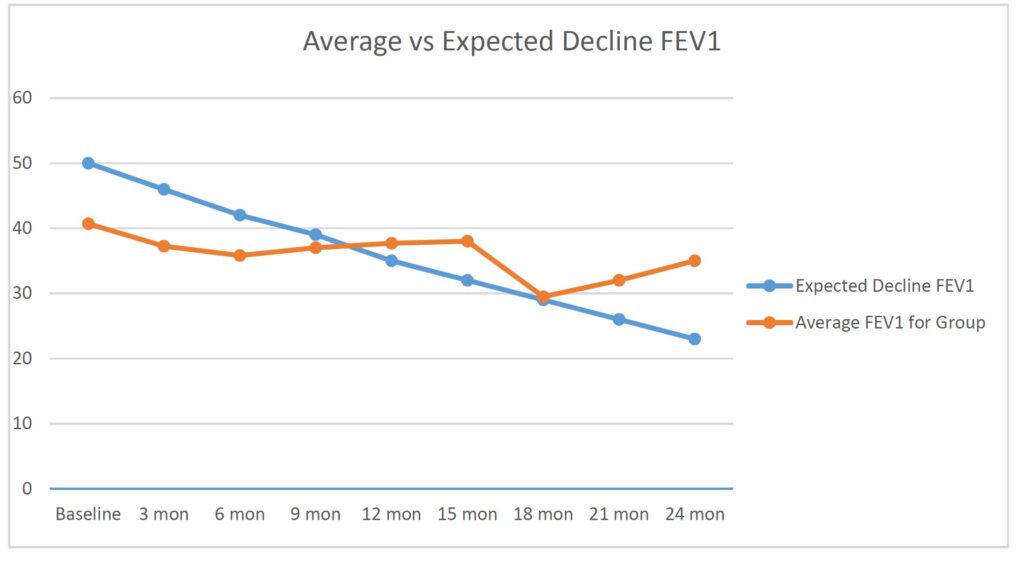
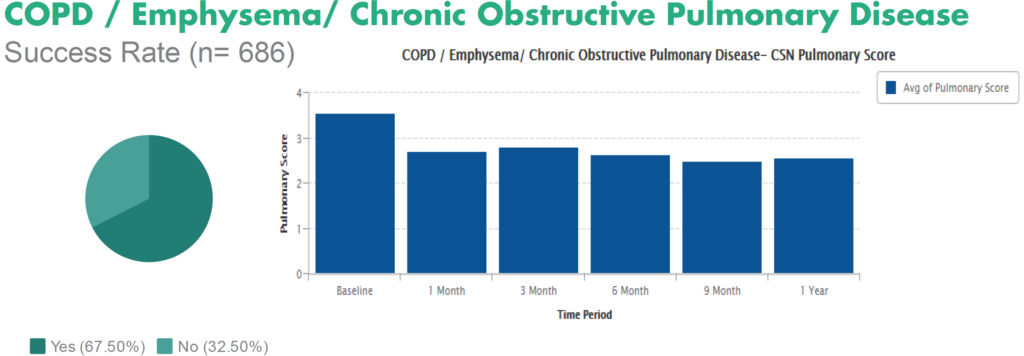
5. Question: What should I expect after my stem cell deployment?
A: Most of the time, repeat deployment is done after the patient has seen some improvement and more improvement is sought. Occasionally, repeat deployment is done because the patient has lost some previously seen improvement. The question of how many deployments are best and how often they are needed is an area of intense interest and study at this time. It is too early to say conclusively that adult stem cell treatment promotes the growth of new lung cells.
Why Choose Innovations Stem Cell Center?
Over 12 years of stem cell treatment experience
Thousands of successful cases
Featured on national TV, including Good Morning Texas
Safe, outpatient procedures — no general anesthesia
Trusted by patients across the U.S.
How Our COPD Treatment Protocol Works
At Innovations Stem Cell Center, our COPD stem cell therapy process is personalized for each patient. Here’s what you can expect:
Consultation: A thorough review of your medical history and current lung function.
Treatment Day: Mini liposuction to collect adipose tissue (under local anesthesia), same-day stem cell processing, and IV infusion.
Recovery: Most patients feel well enough to fly or drive home the next day. There’s no downtime and no hospital stay required.
Our goal is to make the process as simple and comfortable as possible — even for those traveling from out of state.
Ready to explore if stem cell therapy for COPD is right for you? Book a free consultation by clicking here.


